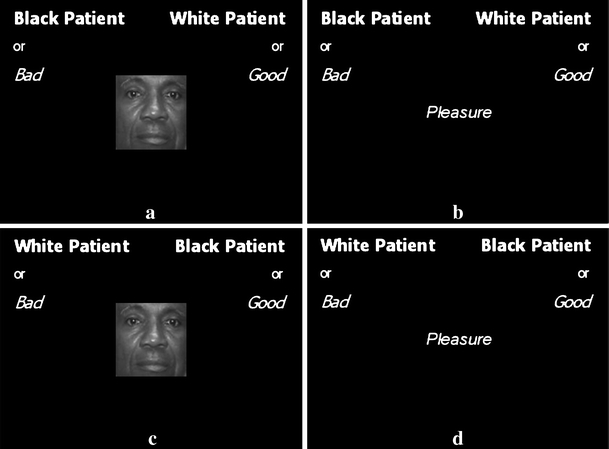Figure 1.

Implicit Association Test (IAT) sample screens and stimuli. This figure displays sample screens and stimuli from the race preference (black-white/good-bad) IAT. Sample screens a, b, c, and d represent examples of pairing tasks that participants rapidly complete. Pictures of black or white individuals and words representing good or bad evaluative attributes are flashed in the center of the screen, and subjects quickly classify these as to whether they belong with category pairs shown in the upper left or the upper right of their screens using the e or i key on their computer keyboard. Numerous pictures and words are flashed onscreen for each of the two possible pairings, with responses usually taking less than a second and the order counterbalanced across participants. The speed to associate black+bad and white+good (screens a and b) relative to the opposite pairing of black+good and white+bad (screens c and d) constitutes the IAT score, interpreted to be a measure of implicit race preference
